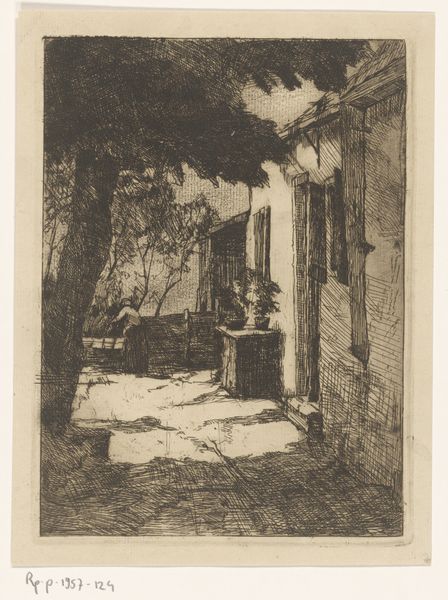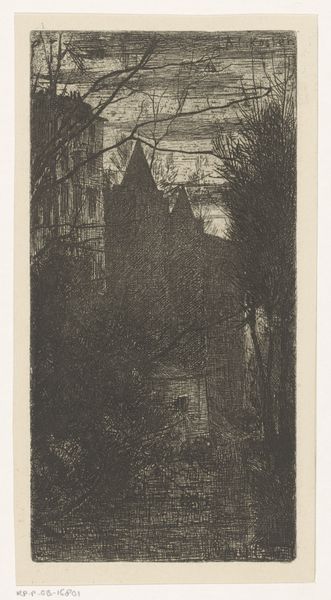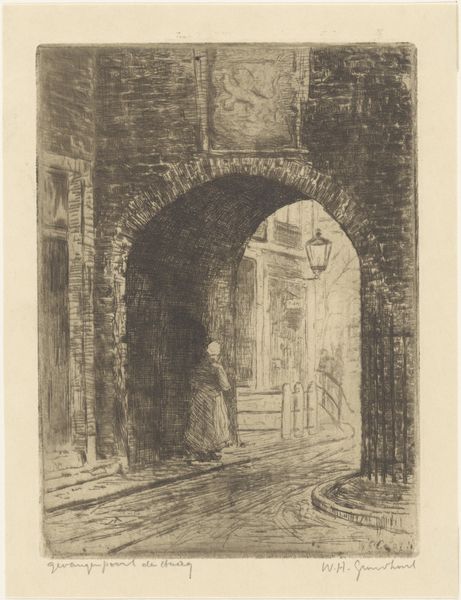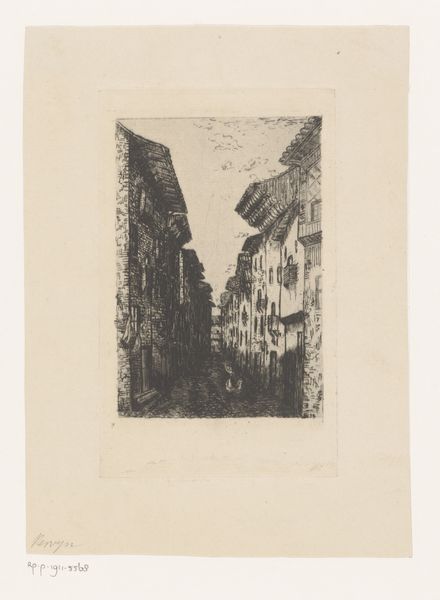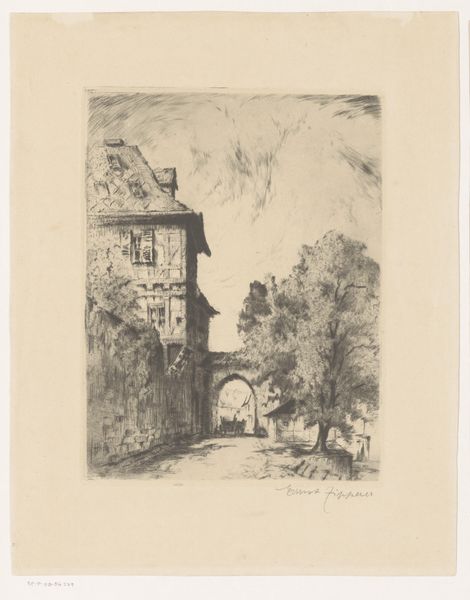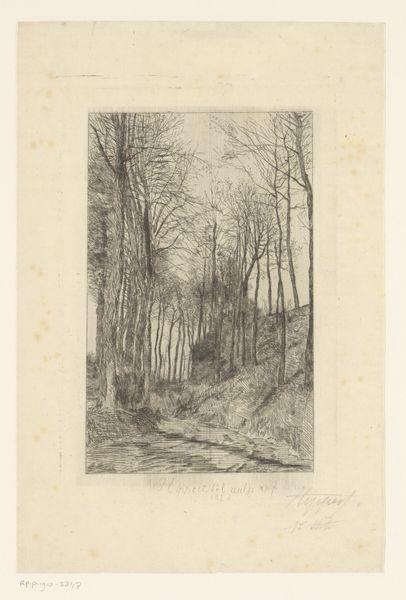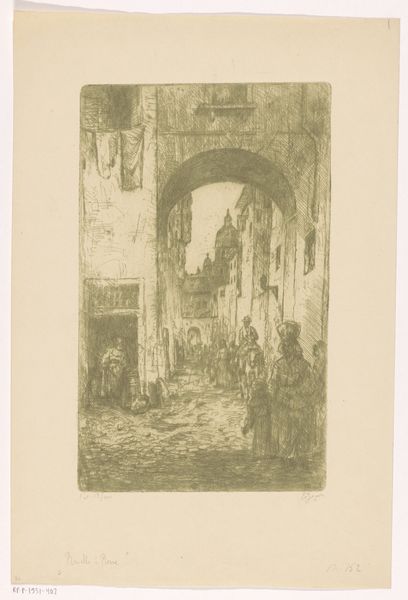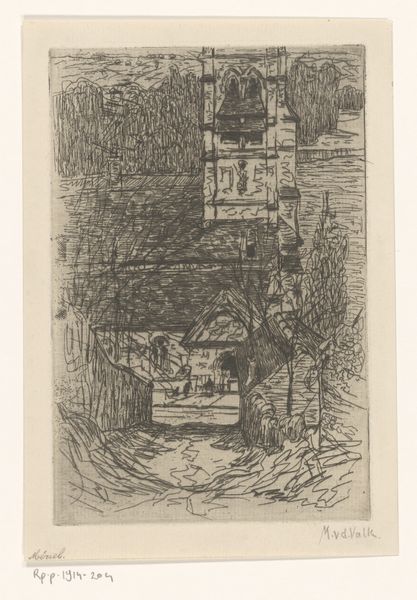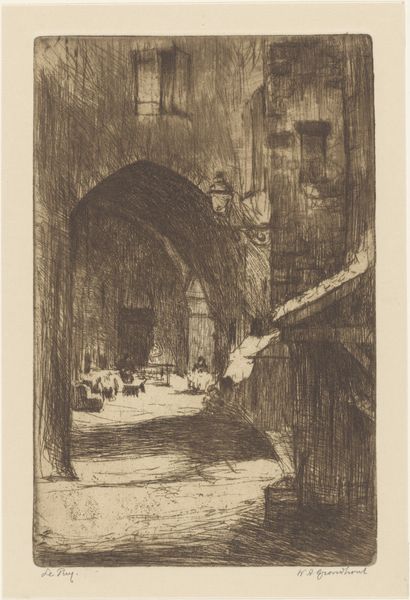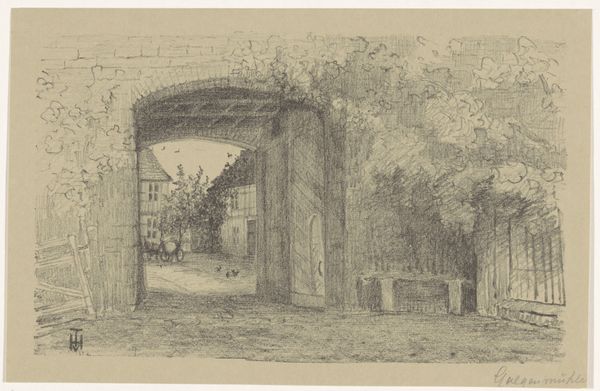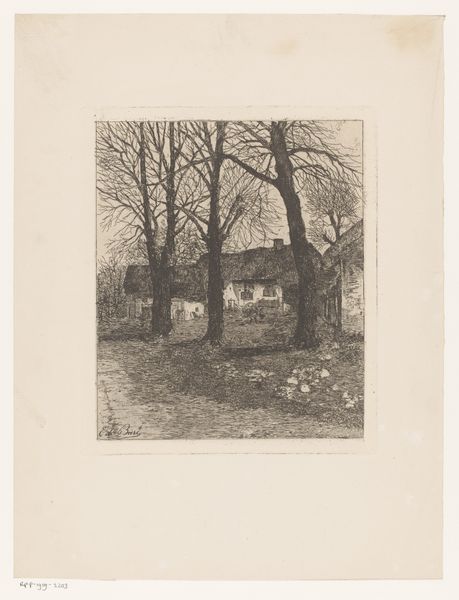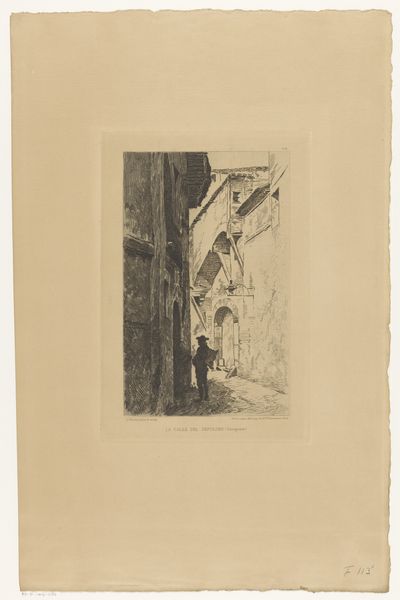
print, etching
# print
#
etching
#
landscape
#
etching
#
realism
Dimensions: height 217 mm, width 170 mm
Copyright: Rijks Museum: Open Domain
Editor: This is "Oprit van landgoed Elswout," a landscape etching by Cornelia Christina Johanna van Trigt-Hoevenaar, made sometime between 1864 and 1909. It's a very detailed scene; the light and shadows create an almost dreamlike quality. What do you see in this piece beyond the idyllic scene? Curator: I see a meditation on privilege and access. While the artwork seems to celebrate the beauty of the Elswout estate, we must consider the historical context: Who had access to such landscapes? Who was excluded? How does the image contribute to the romanticization of land ownership during a period of vast social inequality? Editor: That’s a powerful perspective. I hadn’t really thought about it that way. Does the medium, etching, play into that reading? Curator: Absolutely. Etching, as a printmaking technique, allowed for wider distribution of this image, potentially reinforcing the perceived status and desirability of such estates among a growing middle class aspiring to elite lifestyles. It visualizes a reality divorced from the working-class experiences of the time. How do you feel that changes our interpretation of its "realism"? Editor: So, it's not just about what’s depicted, but also how it was shared and consumed. It makes me wonder about the artist's intentions, too. Was she consciously aware of this dynamic? Curator: That's the key question! Unpacking those layers is where art history connects to larger conversations about power, representation, and the ongoing legacy of historical inequalities. Considering Van Trigt-Hoevenaar's position within that society, her choices, conscious or not, reflect the complex dynamics of the time. Editor: This has completely transformed my understanding of what seemed like a simple landscape print. Thank you! Curator: And thank you for bringing fresh eyes to it. That’s what makes these conversations so important – constantly re-evaluating art within the contexts that shaped it, and that it helped shape.
Comments
No comments
Be the first to comment and join the conversation on the ultimate creative platform.
